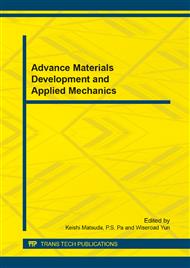p.349
p.353
p.361
p.365
p.372
p.376
p.380
p.384
p.388
Simulation Research on the Compound Control System of Internal Model Add Feed-Forward Compensator
Abstract:
According to the characteristics of the internal model control and feed-forward control and Combining the both advantages, the compound control system of the internal model add feed-forward compensator was designed. In order to improve the dynamic performance of the control system, online identification method is adopted to establish the internal model. The designs of the internal model controller and feed-forward compensator were detailed instructions. The simulation shows that the compound control system have not only good dynamic performance, high tracking precision and strong anti-jamming capability, but also have the change of system parameters with strong robustness.
Info:
Periodical:
Pages:
372-375
Citation:
Online since:
July 2014
Authors:
Price:
Сopyright:
© 2014 Trans Tech Publications Ltd. All Rights Reserved
Share:
Citation:


